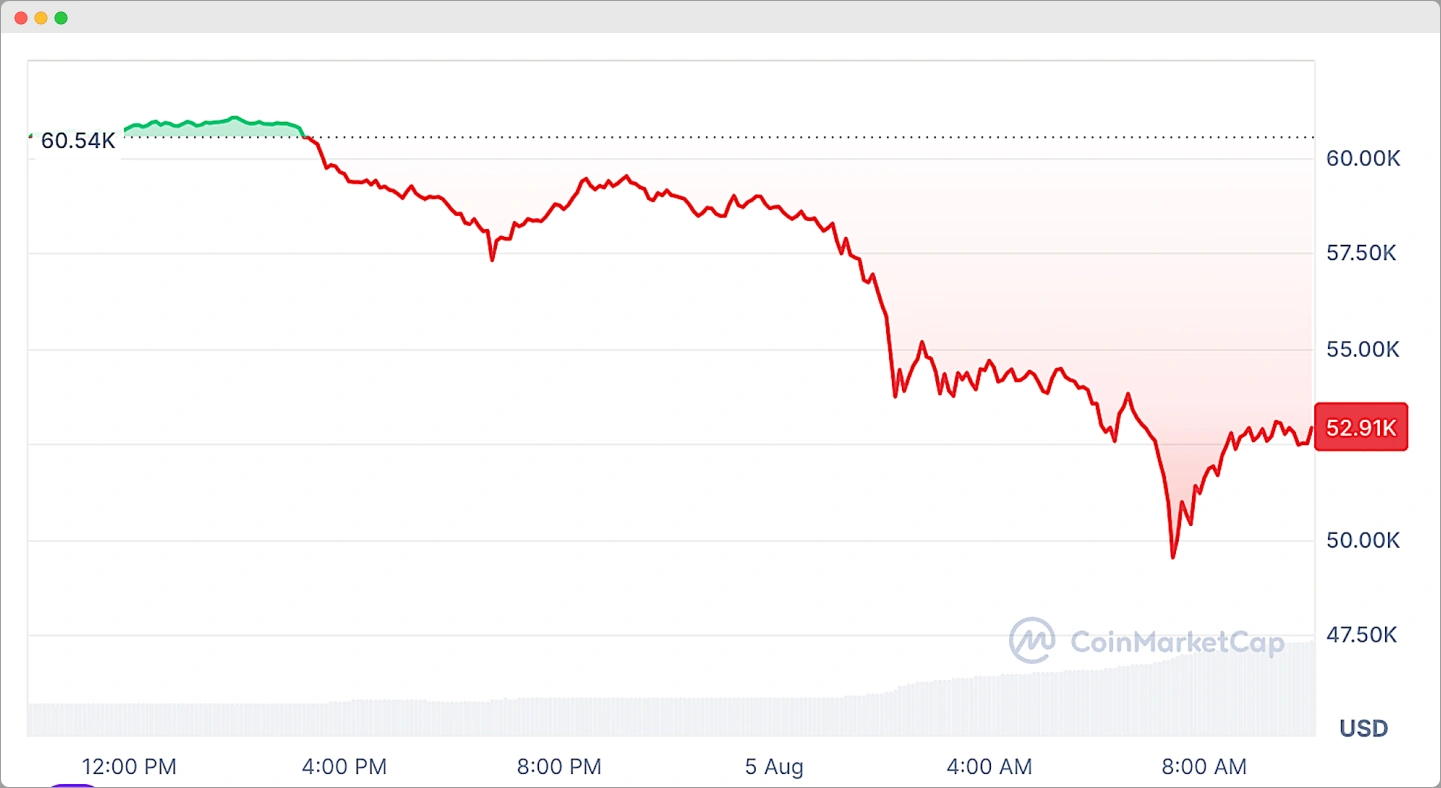What is a Coin in Cryptocurrency?
A coin is a native digital currency that fundamentally powers its own blockchain. But how exactly their works?
Let’s find out how a crypto coin secure blockchain networks, and the various features and benefits they offer.
We will explore the history, consensus mechanisms, and the roles coins play as a medium of exchange, store of value, and incentives for participants in decentralized ecosystems.
Key Takeaways:
ShowWhat Is a Crypto Coin?

In the cryptocurrency world, a coin is a digital currency that operates as the native asset on its own blockchain.
Unlike tokens, which are built on top of existing blockchains, coins are integral to the structure, security, and functionality of the blockchain they reside on.
For example, Bitcoin (BTC) is the native coin of the Bitcoin blockchain, while Ether (ETH) is the native coin of the Ethereum blockchain.
Crypto coins serve various important roles, such as:
- Medium of Exchange: Coins facilitate peer-to-peer transactions without relying on centralized financial institutions.
- Store of Value: Many view coins as digital gold, preserving value over time.
- Unit of Account: They provide a basis for pricing goods, services, and other digital or real-world assets within their ecosystems.
How Coins Function on Their Own Blockchain

1. Native Blockchain Integration
A crypto coin is inherently woven into the fabric of its own blockchain. This tight integration means that coins:
- Secure the Network: Through mechanisms like proof-of-work (PoW) or proof-of-stake (PoS), native coins incentivize miners or validators to maintain the network, validate transactions, and secure the blockchain against fraudulent activities.
- Facilitate Transactions: Every transaction on the blockchain is denominated in the native coin. For example, when you send Bitcoin, you are transferring BTC from your wallet to another.
- Power Network Operations: Many blockchains use coins to pay transaction fees (often called “gas” in networks like Ethereum) and to reward network participants who contribute computing power or stake their holdings.
2. Blockchain Consensus Mechanisms
The issuance and management of coins are deeply connected to a blockchain’s consensus mechanism:
- Proof-of-Work (PoW): In PoW networks (like Bitcoin), coins are earned through a process called mining, which involves solving complex cryptographic puzzles.
- Proof-of-Stake (PoS): In PoS networks (such as Ethereum 2.0 or Cardano), coins are staked by holders to secure the network, and validators are chosen based on the amount they stake.
- Other Mechanisms: Some blockchains use alternative consensus algorithms (like Delegated Proof-of-Stake or Byzantine Fault Tolerance methods), all of which use coins as essential elements in incentivizing and governing the network.
A Brief History of Crypto Coins
1. The Genesis of Digital Money
The concept of a digital coin was popularized by the launch of Bitcoin in 2009. Satoshi Nakamoto’s whitepaper introduced the world to a decentralized form of currency that operated without the need for traditional financial intermediaries.
2. Evolution and Innovation
Following Bitcoin’s success, many other crypto coins emerged, each aiming to improve on one or more aspects of the original concept:
- Ethereum (ETH) introduced the concept of smart contracts, allowing for more complex and automated transactions beyond simple transfers of value.
- Litecoin (LTC) and other forks or alternative implementations sought faster transactions, different mining algorithms, or other technical variations (e.g Alternative coins).
- New Generation Coins: Many modern crypto coins now implement advanced consensus mechanisms, improved scalability solutions, and enhanced privacy features, broadening the use cases and increasing adoption.
Key Characteristics of Crypto Coins

1. Decentralization and Security
- Decentralized Nature: Coins operate on decentralized networks without a central authority controlling the ledger. This decentralization enhances security and resilience against manipulation.
- Security Mechanisms: Through cryptographic techniques and consensus algorithms, coins ensure that transactions are tamper-proof and secure, bolstering trust among network participants.
2. Scarcity and Inflation Control
- Finite Supply: Many crypto coins, like Bitcoin, have a capped supply (e.g., Bitcoin’s 21 million coin limit), creating scarcity that can drive value appreciation and the market cap, over time.
- Controlled Issuance: The creation of new coins is often predefined by algorithms. This controlled issuance contrasts with traditional fiat currencies, which can be subject to inflationary monetary policies.
3. Network Utility
- Transaction Fees: Coins are used to pay for network transaction fees, ensuring the smooth operation of blockchain activities.
- Incentives for Participation: Miners or validators earn coins as rewards for processing transactions and maintaining the integrity of the network, creating a self-sustaining ecosystem.
Common Use Cases for Crypto Coins
1. Peer-to-Peer Transactions
One of the foundational use cases for coins is enabling direct, borderless transactions. Whether for buying goods, paying for services, or sending remittances internationally, coins facilitate quick and inexpensive transfers without intermediaries.
2. Digital Store of Value
Many investors regard coins—especially Bitcoin—as a store of value. Known for its predictable supply schedule and decentralized architecture, Bitcoin is often compared to traditional “safe haven” assets like gold.
3. Ecosystem Participation
Coins are essential for accessing and participating in various blockchain ecosystem features:
- Payment of Fees: Users pay transaction fees or “gas” in the native coin.
- Staking and Governance: In PoS networks, coins are staked to earn rewards and, in some cases, provide governance rights, influencing key network parameters and upgrades.
- Inter-Chain Transactions: Some coins serve as bridges between different blockchain networks, facilitating interoperability and expanding the utility across multiple platforms.
4. Fundraising and Investment
Many new blockchain projects rely on their native coins for initial fundraising (e.g., through token sales or direct coin offerings).
These coins often serve both as an investment vehicle and as a means to participate in the project’s future growth.
Technological Underpinnings of Coins

1. Blockchain Technology
A coin’s existence is inseparable from its blockchain. The blockchain provides:
- Immutable Ledger: A permanent and transparent record of all transactions.
- Decentralized Operations: A trustless environment where no single entity has overarching control.
- Scalability Solutions: Modern blockchains continuously innovate to handle increasing transaction volumes through various scalability approaches (e.g., layer-two solutions).
2. Smart Contract Integration (When Applicable)
While coins are native to their blockchains, some platforms integrate smart contract capabilities to extend functionality:
- Automated Processes: Smart contracts can automate tasks like tokenized staking, rewards distribution, or even decentralized finance (DeFi) activities.
- Enhanced Interactivity: In ecosystems like Ethereum, while ETH is the native coin, smart contracts enable a wide array of applications that interact seamlessly with the underlying coin’s value and utility.
Risks and Considerations

1. Market Volatility
- Price Fluctuations: Crypto coins can experience significant price volatility. Factors influencing this include market sentiment, regulatory news, and technological developments.
- Speculation: A substantial portion of coin trading is driven by speculation, which may amplify price swings.
2. Regulatory Scrutiny
- Global Regulatory Landscape: The regulatory environment surrounding coins continues to evolve. Different jurisdictions may treat them as commodities, currencies, or investment assets, leading to varying degrees of oversight and legal requirements.
- Compliance: Projects issuing coins must navigate increasingly stringent compliance and reporting frameworks to ensure the long-term sustainability of their platforms.
3. Technological and Security Risks
- Network Attacks: Although decentralized, coins are not entirely immune to attacks such as 51% attacks or network vulnerabilities.
- Software Bugs: The underlying blockchain software can contain bugs or unforeseen vulnerabilities that might compromise security, though ongoing community efforts and audits often help mitigate these risks.
Final Word
Crypto coins are much more than just digital money—they are the fundamental fuel that powers their respective blockchains.
They ensure network security, facilitate transactions, and serve as incentives for all participants in the system.
From Bitcoin’s pioneering approach to decentralized money to Ethereum’s versatile ecosystem, coins have transformed how we think about finance, value, and asset ownership.
While the use of coins opens up exciting opportunities for innovation and economic participation, it also comes with its own set of challenges—market volatility, regulatory uncertainties, and technological risks.
Frequently Asked Questions (FAQs)
What is crypto coin used for?
Crypto coins are used as a medium of exchange for conducting transactions, as a store of value, and as an integral part of blockchain networks where they also secure the network through consensus mechanisms like mining or staking.
Is crypto coin real money?
Crypto coins represent real digital money that can be used for transactions and value storage, although their acceptance and legal status may vary depending on regulatory frameworks and market contexts.
What is a crypto token vs coin?
A crypto coin is the native digital currency of its own blockchain, serving as the fundamental unit that powers the network, while a crypto token is built on top of an existing blockchain and usually represents a different type of asset or functionality.

